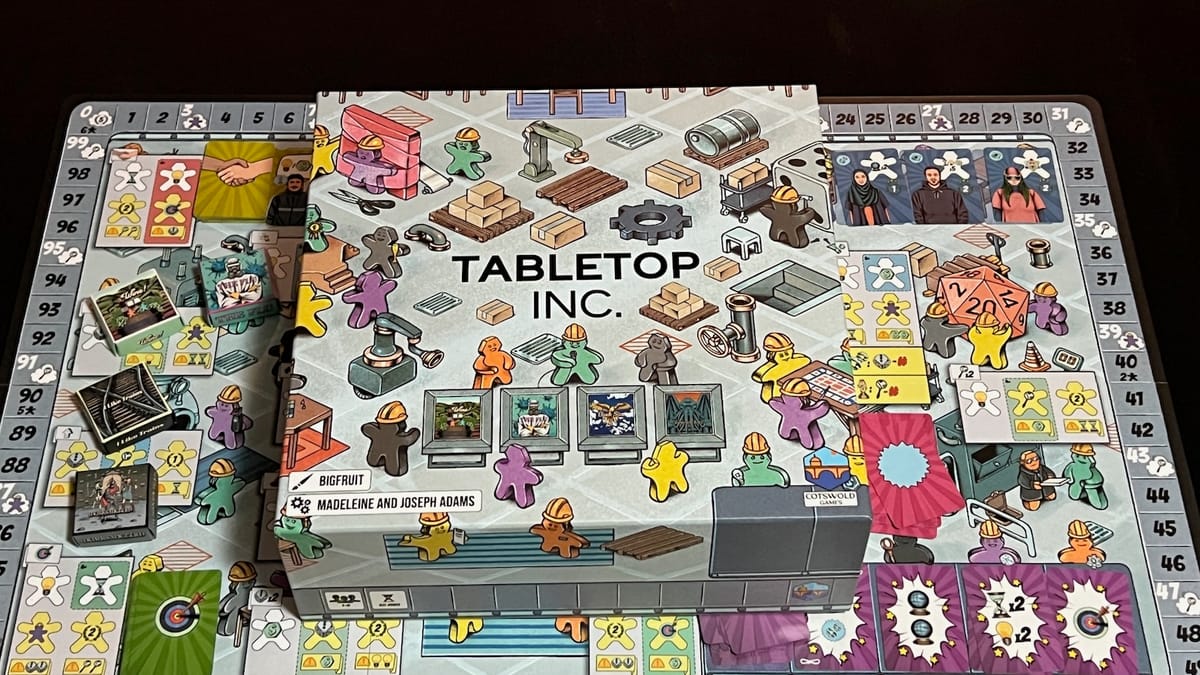
At what point does an industry reach its metamoment? That moment when its grown so much and has created such a wide user base that it can look in on itself and create a product about the industry itself? Pretty deep stuff, right? It was only a matter of time before a board game about making board games hit the market and Tabletop Inc. has the distinct pleasure of being one of the firsts.
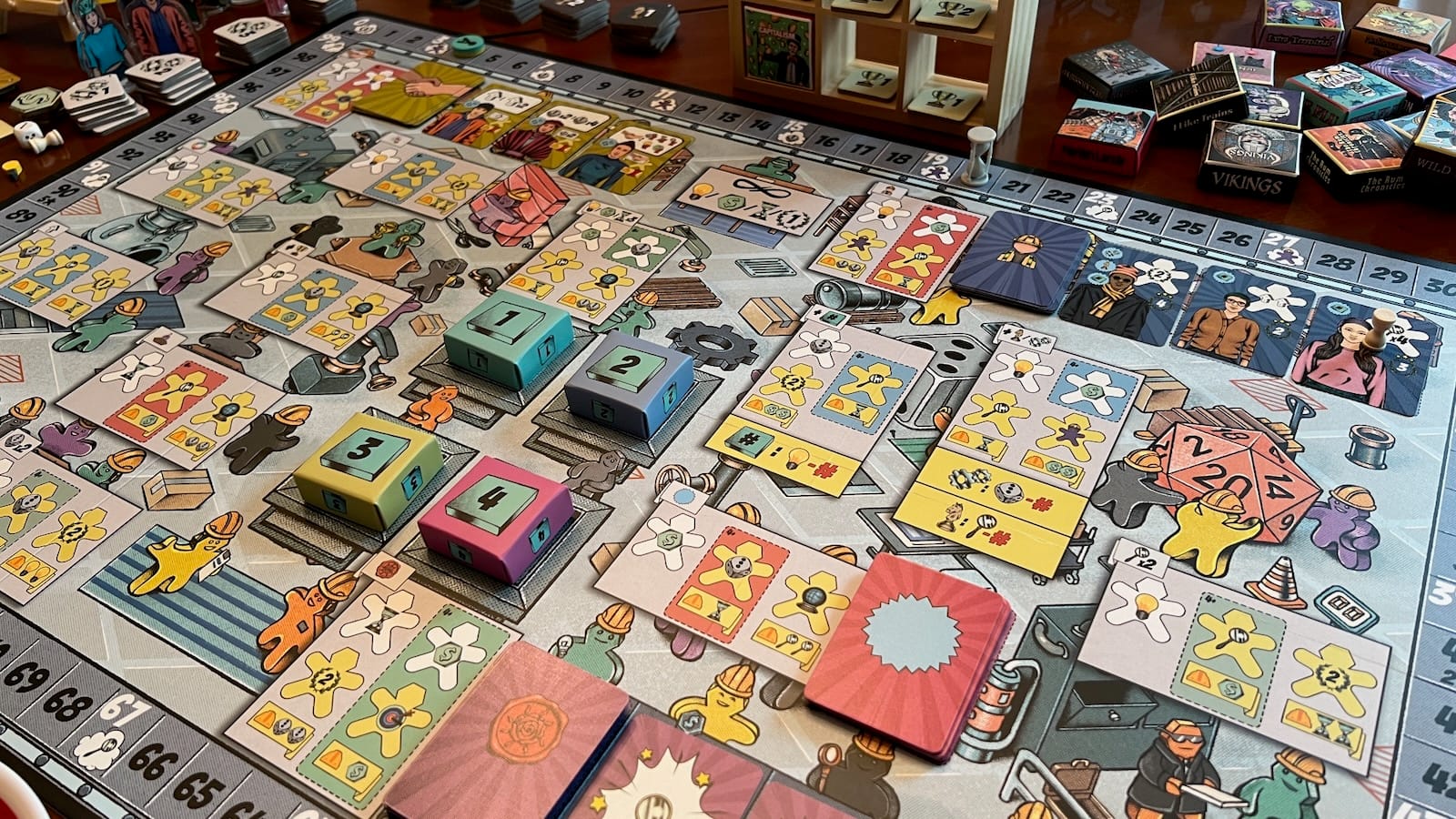
Tabletop Inc. from Cotswold Games and designers Joseph and Madeline Adams is a worker placement game set in an alternate 1970s universe where board game designers and “mumans” work together to make the best new board games for market. Throughout the game, players will place workers, hire specialists, develop the different components of a game, and publish the games in hopes of winning an award. After time runs out, the player with the most points wins the game and all the mumans will rejoice in their victory.
What the heck is a “muman” you may be asking? During the development of the game, the term “meeple” was trademarked in the European Union. The game was originally being marketed as Meeple Inc. and via a cease and desist notice to the company, all references to meeple had to be removed from the game. As this is an alternate universe, a different type of board game worker appeared in the form of a “muman.”
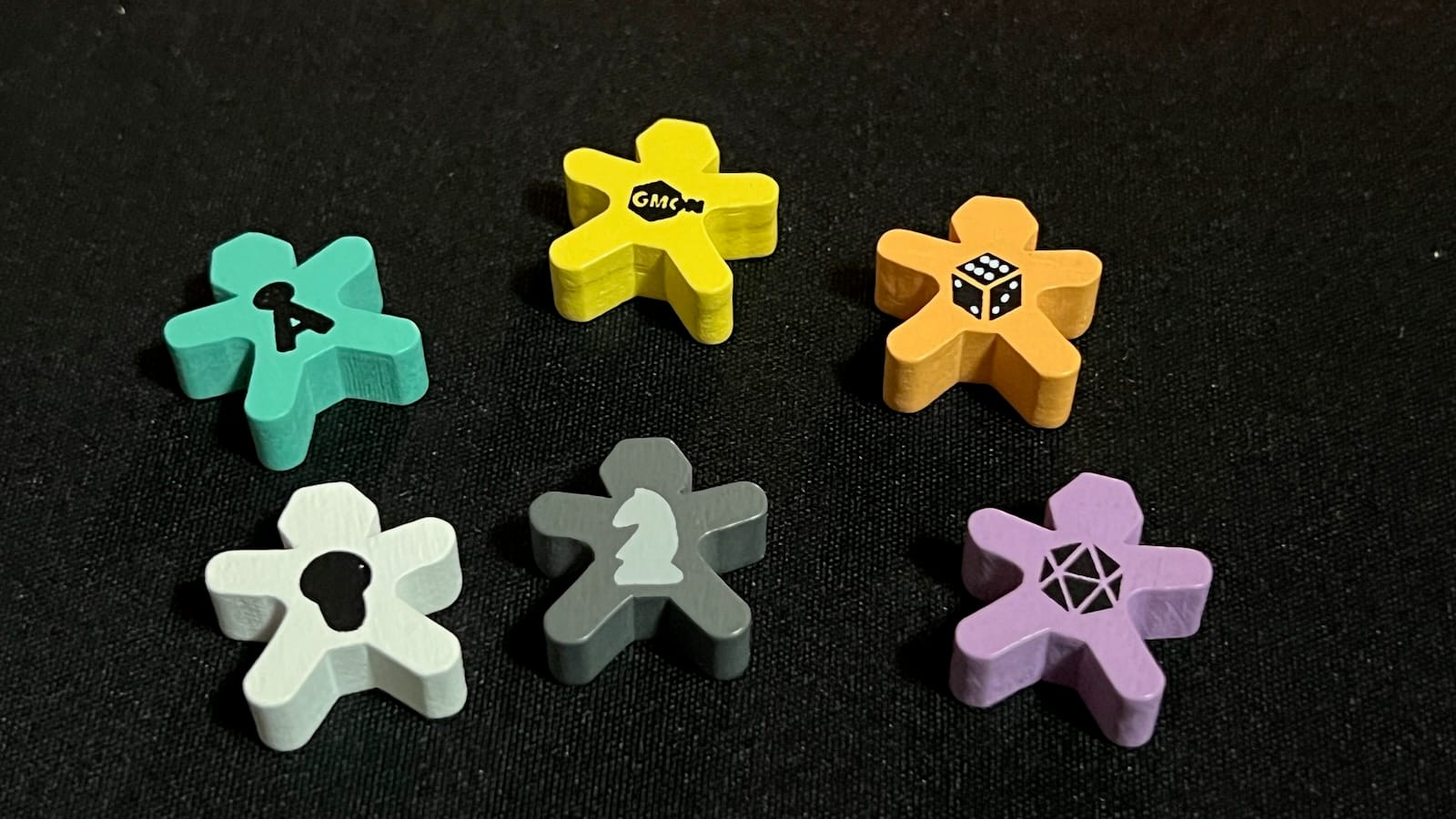
The game of Tabletop Inc. progresses around the table with players getting workers to various locations on the board to execute different actions. Players start with four muman workers but can gain more workers by hiring specialists who give the players unique abilities when taking actions at that worker’s specific location on the board. Players can also acquire freelance workers that provide special worker placement spots unique to that player. Players will recruit, hire, and train these specialists and freelancers to upgrade their knowledge in the box designs, mechanisms, and components needed to publish a completed board game. Players can only attain these items, each ranked from 1-4, if they have the corresponding skills in their player area.
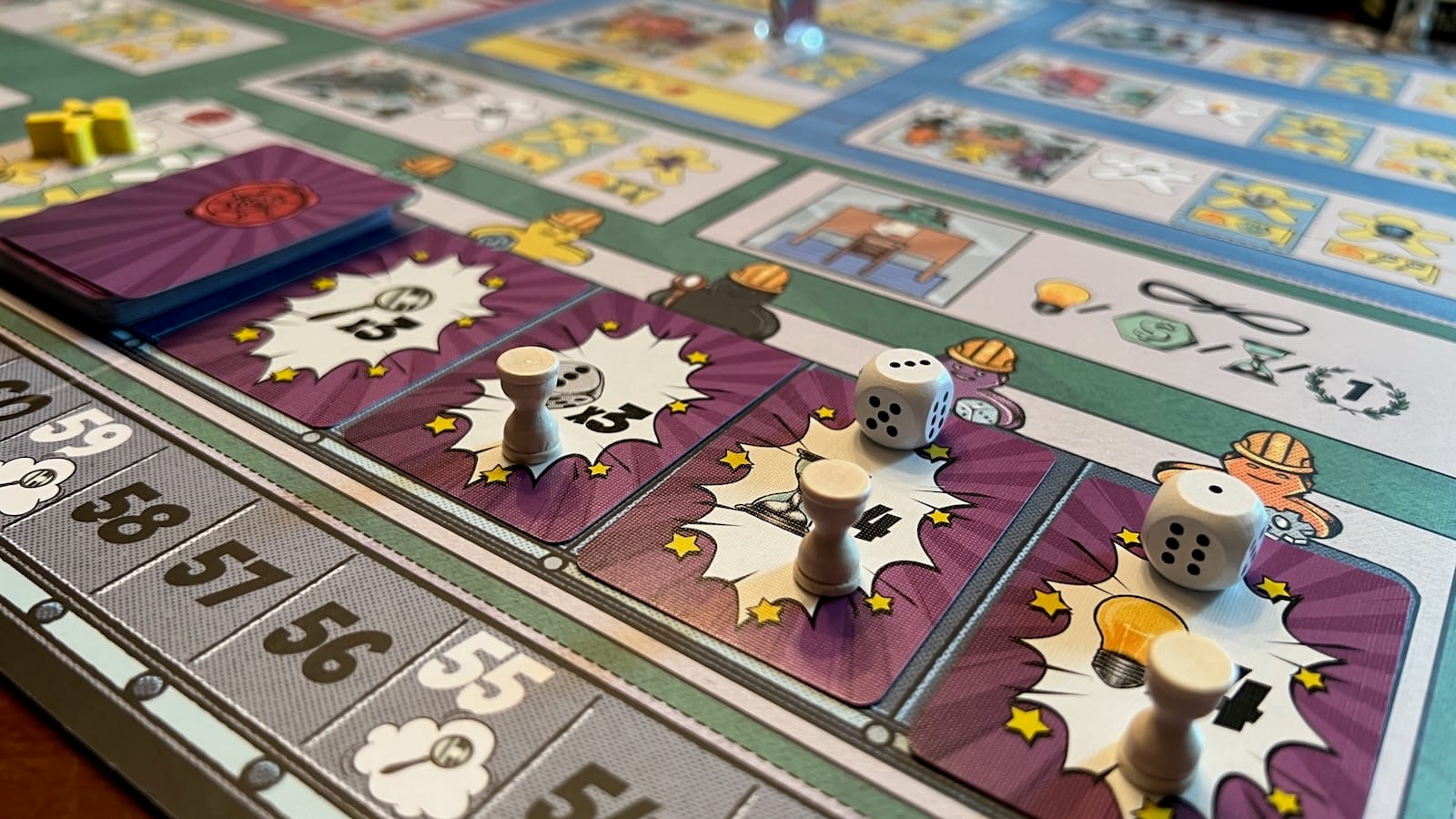
To pay for these game items and different actions throughout the game, players need to acquire and spend different resources. Time (hourglass) tokens represent the time needed to develop a game, inspiration (lightbulb) tokens represent ideas in the game, and the playtest (dice) and research (magnifying glass) tokens represent the needs of developing quality components and mechanisms. As we all know, especially in the current climate, board games also take a lot of money to develop as well! Players are able to earn these different resources through printed bonuses from taking various actions, visiting specific spots on the board, and acquiring special item cards.
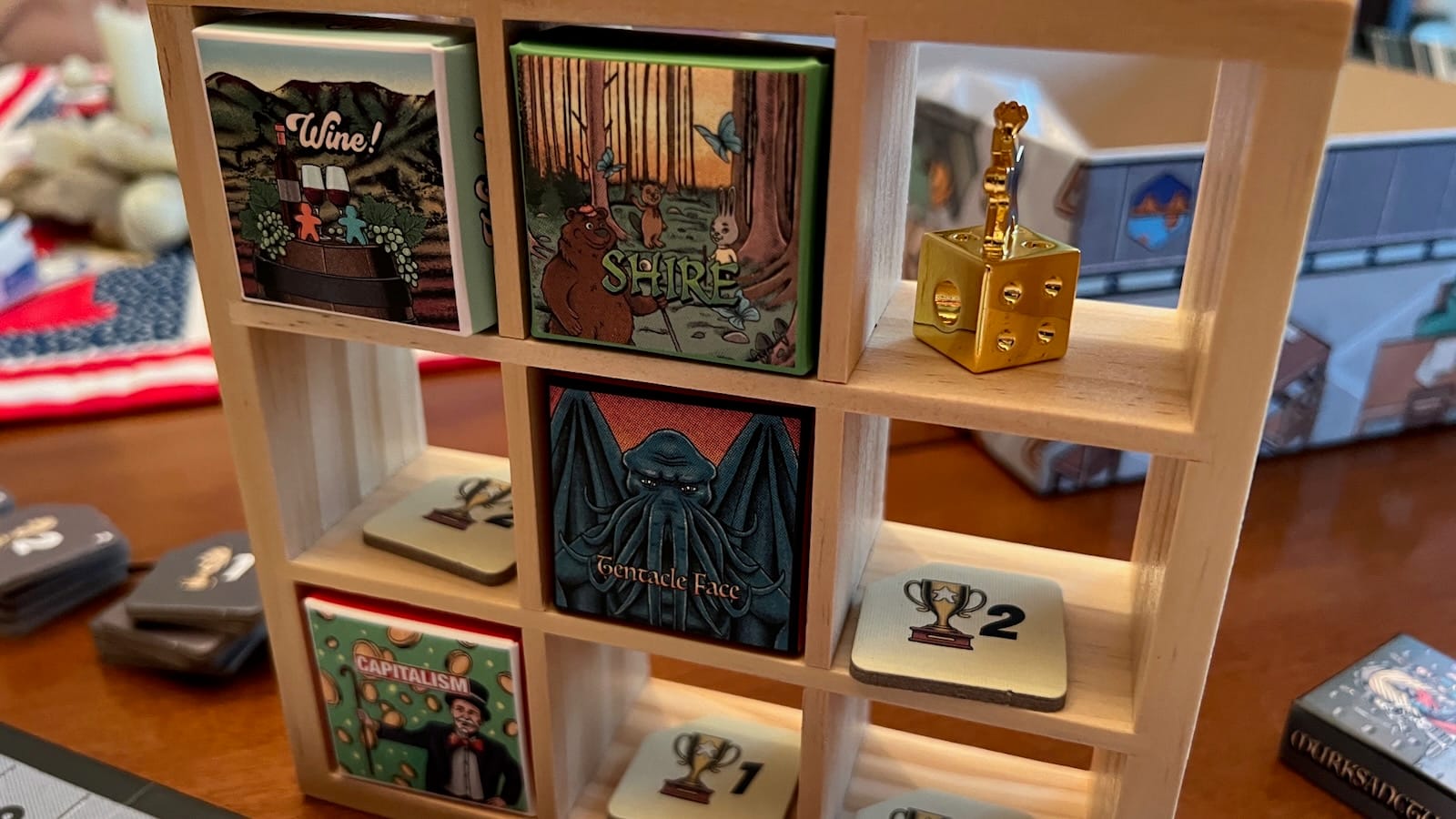
After acquiring the box, mechanism, and component for their game, it can be published and players can choose a lid from a wide variety of tongue-in-cheek titles available. Tentacle Face? I Like Trains? Capitalism? Does anything sound like a real game? A published game will give players game end points equal to the level of each of the items that make up the game or can be submitted for an award to get even more points. At the beginning of the game, each player is given a unique card outlining the required box, component, and mechanism needed for a level one, two, or three award. If requirements are met, players can submit their published games for an award if there is space on the special 3x3 shelf used to display the award winners!
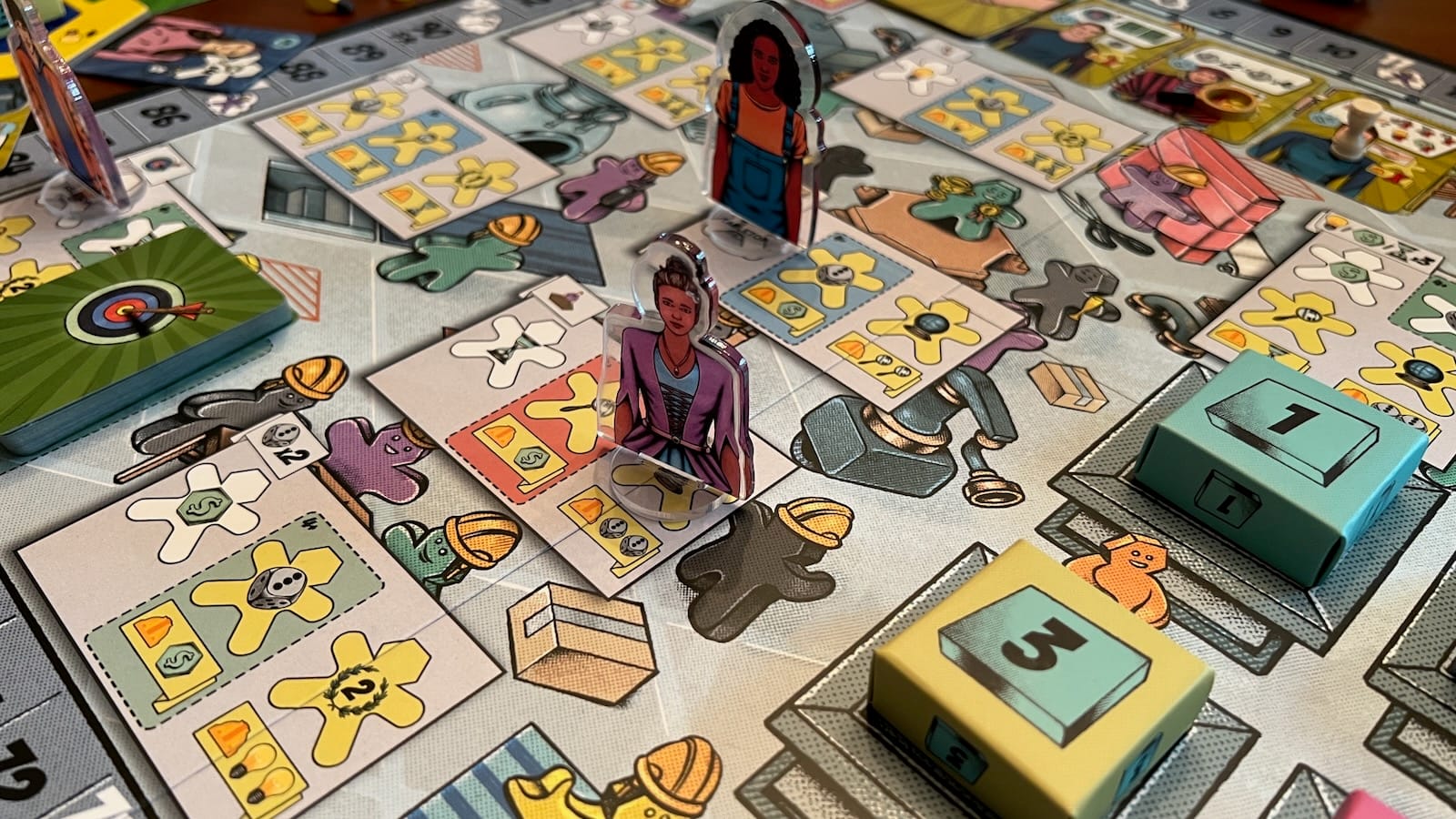
As players run out of workers, they will need to take a turn to return them to their supply. For each worker they return, they will move a large hourglass token counter clockwise around the scoring track. When that token reaches zero, the endgame will trigger. When taking a return worker action, players can spend research tokens to make predictions of how another player may take their upcoming turns. If all of their predictions are correct by the time they take their next return worker action, they will score victory points. Throughout the game, players can also gain scoring objective cards that will gain the player points if they have met the printed conditions or have the necessary resources at the game. At the end of the game, players will tally points based on unpublished and published games, awards, printed values on freelancer cards, and fulfilled objective cards.
Muman-Bot
The game also comes with an automated player allowing the human players to pit their skills against one or multiple automated players solo or in a multiplayer game. Players will use a special leveled “Zap” deck that indicates an action the AI player blocks with one of their mumans and a number of points they will earn depending on the chosen difficulty level. When taking back their workers, the Muman-Bot will randomly choose an opposing player and make predictions based on the difficulty level, earning one victory point for each correct choice. A number of the Zap cards also have players manipulate the offerings on the board to help switch things up, since the Muman-Bot doesn’t actually take actions and only places workers on the board to clog things up.
Overall Thoughts
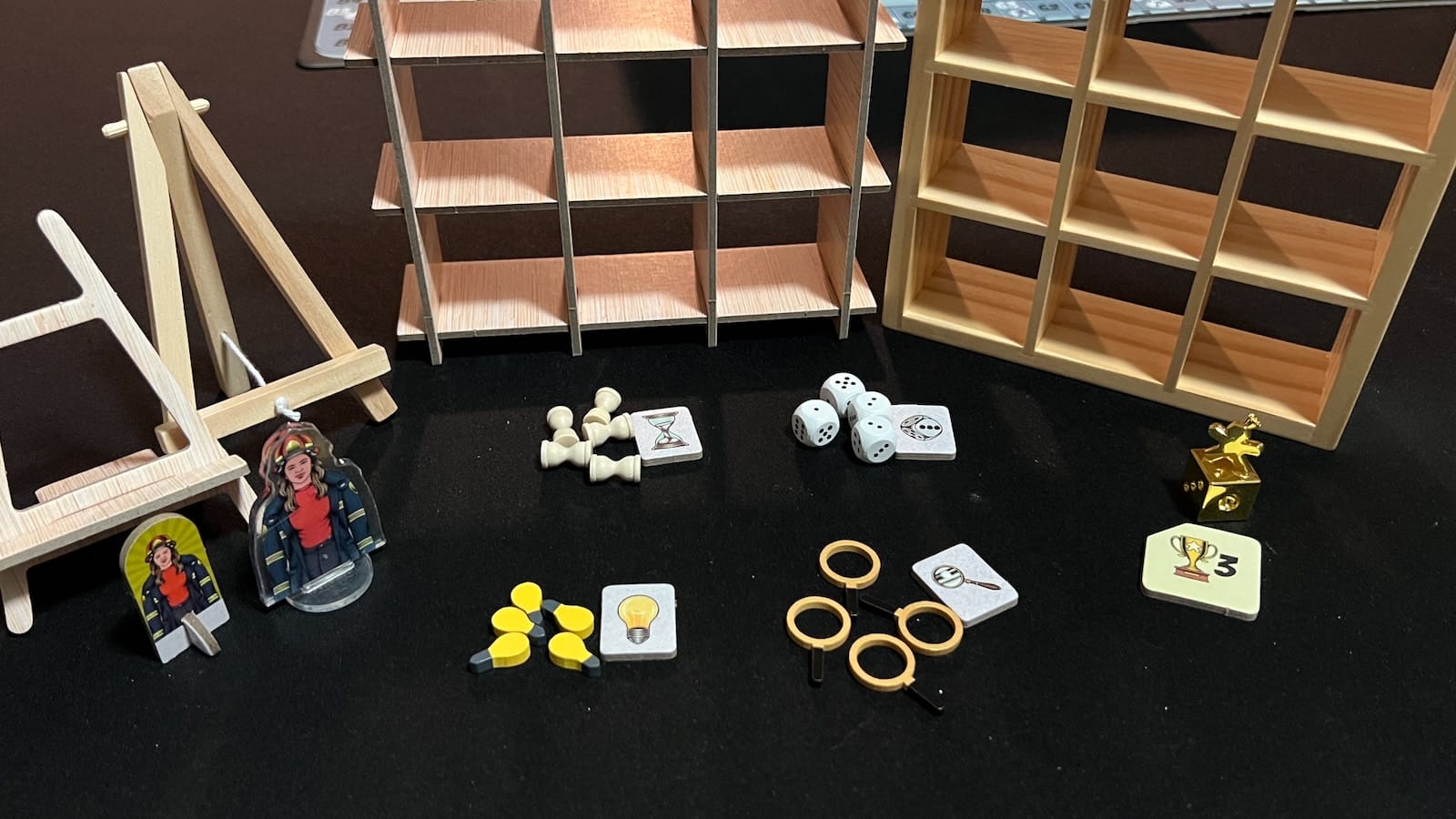
Let’s start with the production side of things. This game has a lot of components and artwork throughout the game. We were able to compare the deluxe and standard components and both of them are great. In a standard game, you will get high quality cardboard tokens to represent each of the resources, but the deluxe upgrade kit is fantastic. Each of the resources are represented by small representations of the real thing, such as small hourglasses, light bulbs, magnifying glasses, and best of all, actual six sided dice for the playtest resource. The upgrade pack also upgrades the easels used to display company names and the 3x3 shelf to wooden components. One of my favorite touches was the stickers to put on the component and mechanism tiles with actual gameplay terms such as tile-placement and hidden role mechanisms and miniatures and dual-layered board components. This adds some fun flavor to the game when publishing a Cooperative Bag-Building game called Beak Size. Some other deluxified components are the acrylic standees for the specialist characters and the metal level three awards.
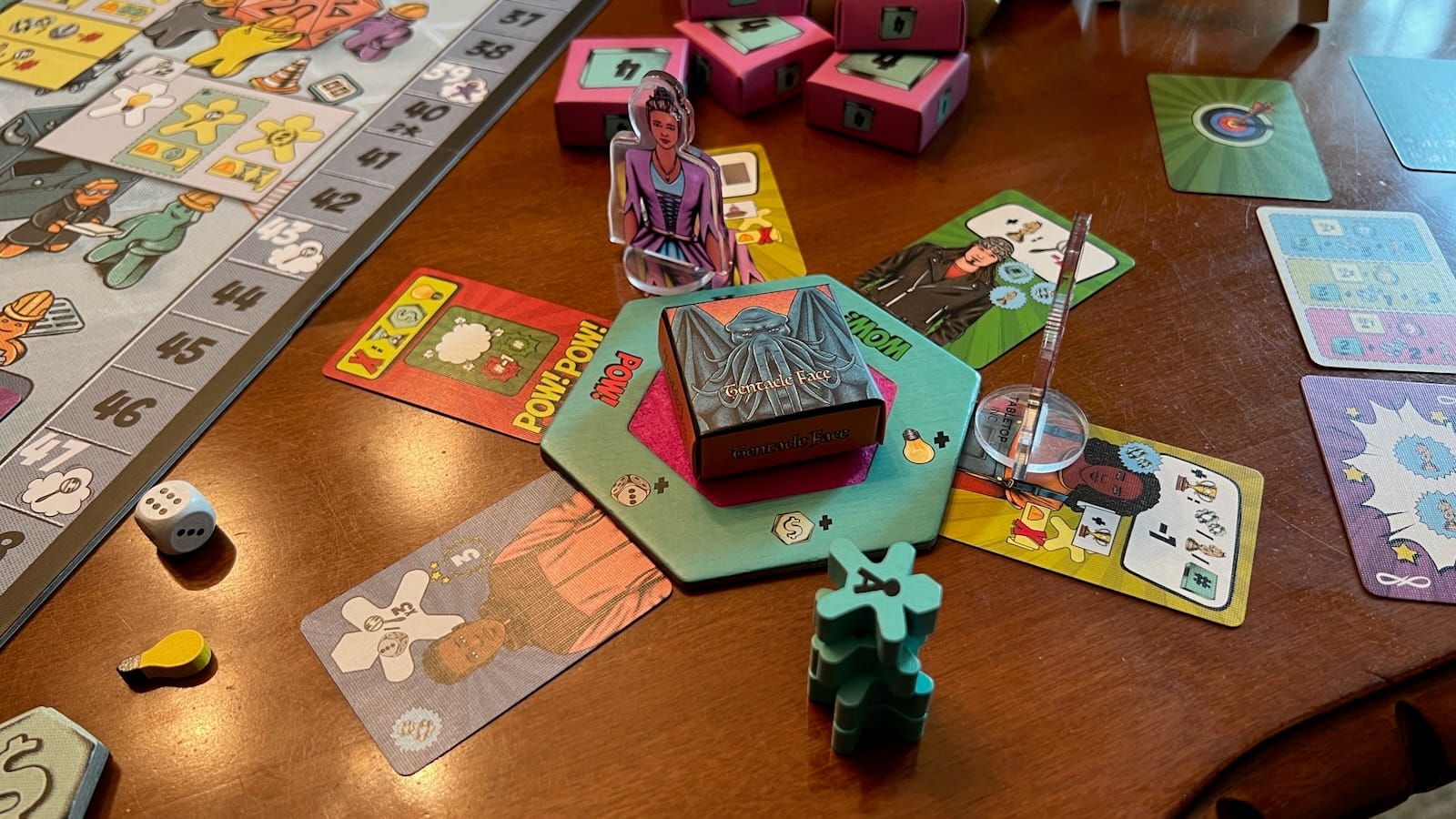
The artwork throughout the game is fun and seems like it was pulled from a retro comic book. Even if some of the clothing choices on the specialists seemed a little too modern for the 70s, the overall aesthetic is fun and inviting. The game boxes themselves and the clever takes on popular games is a fun touch. After a playthrough, the iconography used throughout the game is easy to understand and follow.
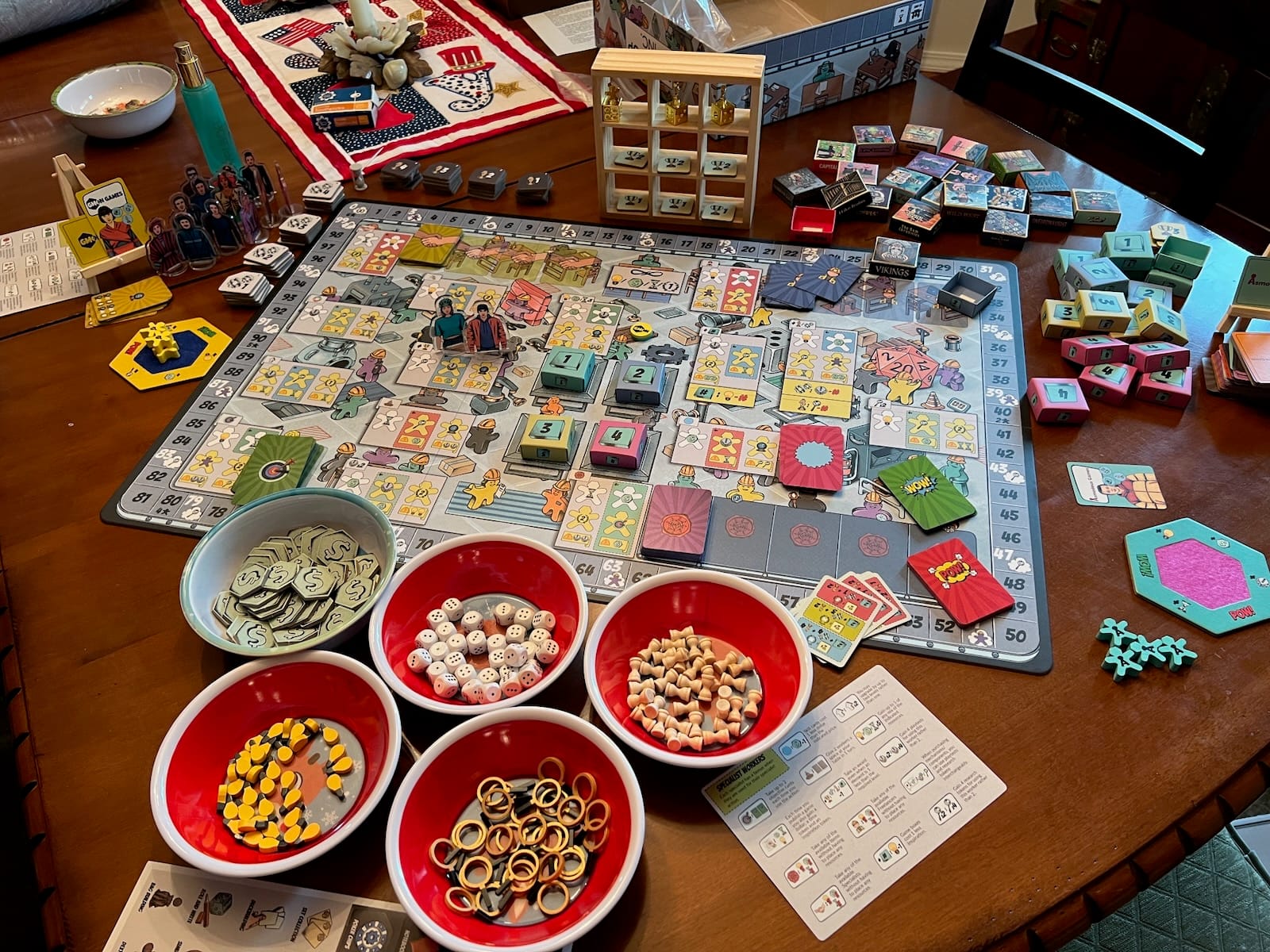
While the aesthetic is there, there is a lot of everything! From the five different resources, to the 12 different types of mini cards, the 20+ mini boxes and lids, 14 standees, easels, shelves, and stacks of component and mechanism tiles, there is so much stuff on the table! The board itself is extremely busy with depictions of mumans in a factory. For the new player, this was a little overwhelming when learning the iconography, and while there is a less busy learning board on the back, there is less space for cards on the board leading to more stuff around the table. I was also not a big fan of having to separate the box bottoms from the tops at the start of each game due to storage limitations.
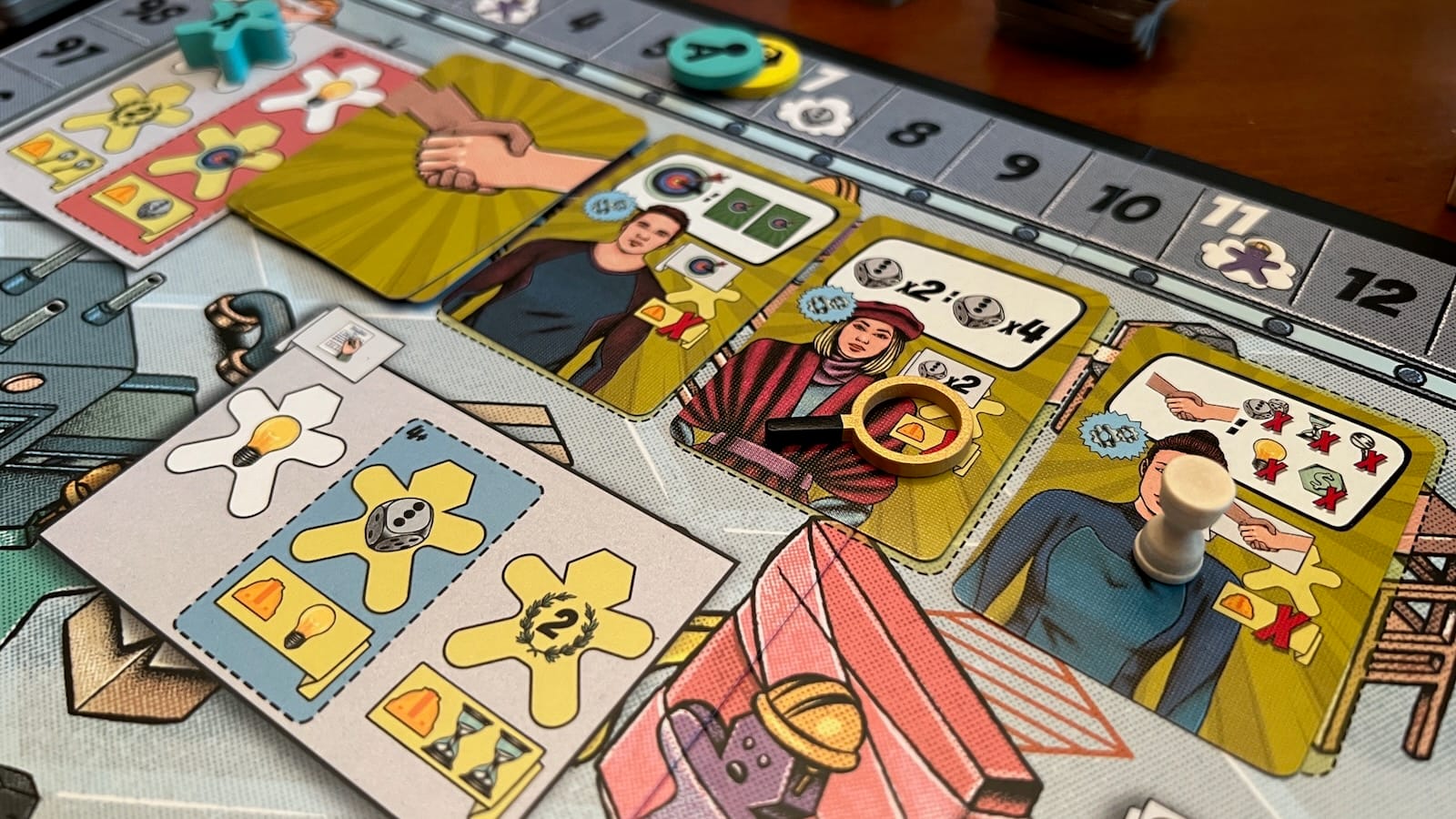
The gameplay of Tabletop Inc. is a lot of fun and plays very differently at different player counts. My two player experience with my wife was pleasant and it never felt like you were lacking something to do. Being able to return your workers at any time can help you maneuver around the board. We were also able to publish and award almost three full games apiece which can’t happen at a higher player count. The four and five player experiences felt similar since new worker placement spaces opened up at 4+ players, but the award shelf spaces began to get tighter causing people to find alternate ways to earn their points. The most interesting experiences were at three and six players due to the sheer volume of workers on the board in relation to available spaces. Players truly had to manipulate their special player benefits and seek out alternate point sources in order to hang in the game. In one playthrough, a player was able to use his player ability of extra points from objectives and a specialist to keep more objective cards to absolutely obliterate the rest of the players while only publishing one game. In another game, someone manipulated the prediction market in conjunction with publishing to get the win. It did seem that a few starting player abilities were a little overpowered compared to some, but it didn’t detract too much from the overall experience. The solo experience to me was a bit lacking, but I did like the opportunity to add the bot into a multiplayer game. I also loved finding a strategic hobby style board game that played up to six players, when it seems like most stop at 4 or 5.
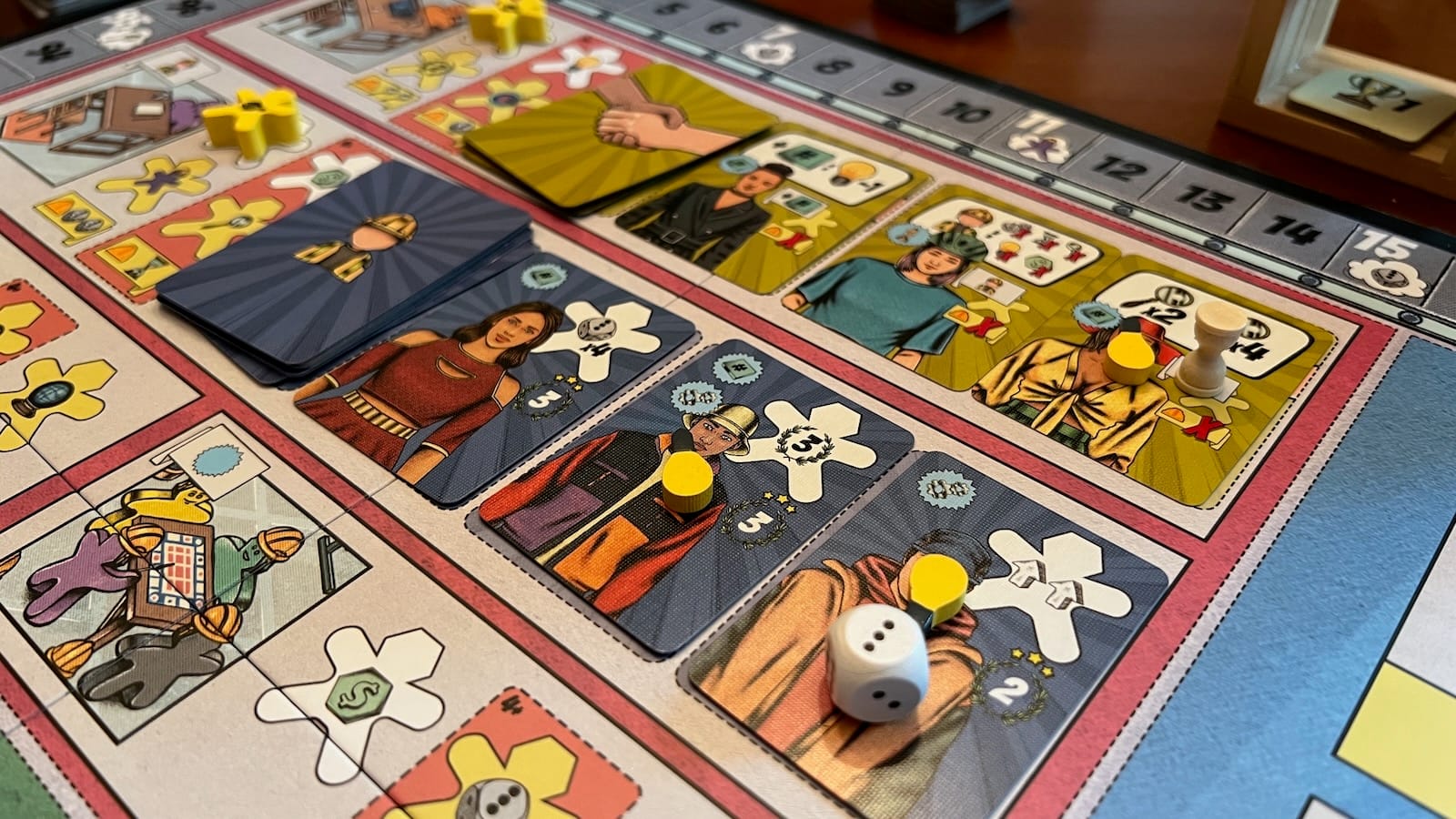
Tabletop Inc., overall, was an enjoyable gaming experience. The meta, tongue in cheek design of the game had our play groups smiling. Though a little quirky in some areas, the design choices and artwork throughout the game were fun and showed a deep level of care and understanding of the tabletop hobby. Throughout the game, you truly felt like you were competing to make the best board game out there. The prediction mechanic helped add some extra flavor to the return workers action and you never feel like the game is out of reach. It’s a love letter to board games and a game to check out for anyone in the community.
Cotswold Games is running a new kickstarter campaign to get the base game, deluxe components, and a brand new crowdfunding themed expansion. Tabletop Inc. launches its reprint and expansion campaign on July 14th, 2025 and can be checked out here.
Tabletop Inc.
Good
Tabletop Inc is a worker placement game about making board games. An entertaining game with different play times and experiences at different player counts. A board game for board game lovers with some interesting strategies and lots of fun components.
Pros
- Strategic gameplay for up to 6 players
- Creating your own personal board game for the shelf
- A love letter to board games
Cons
- A TON of different components
- Busy board artwork
- Clean up and set up take a bit
This review is based on a retail copy provided by the publisher.
